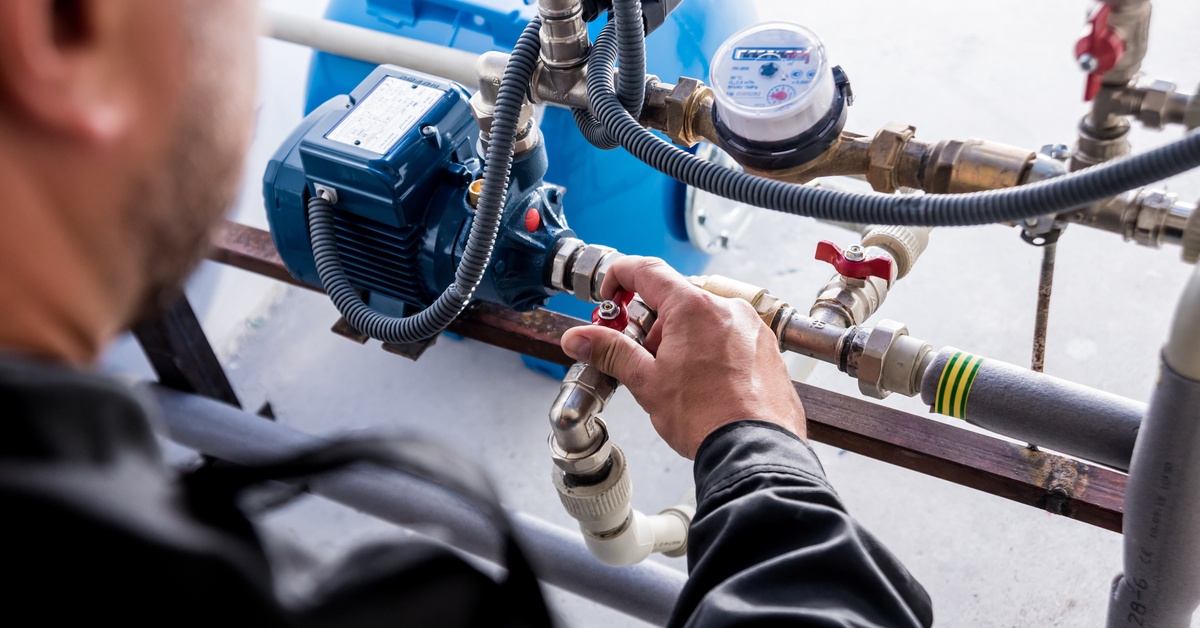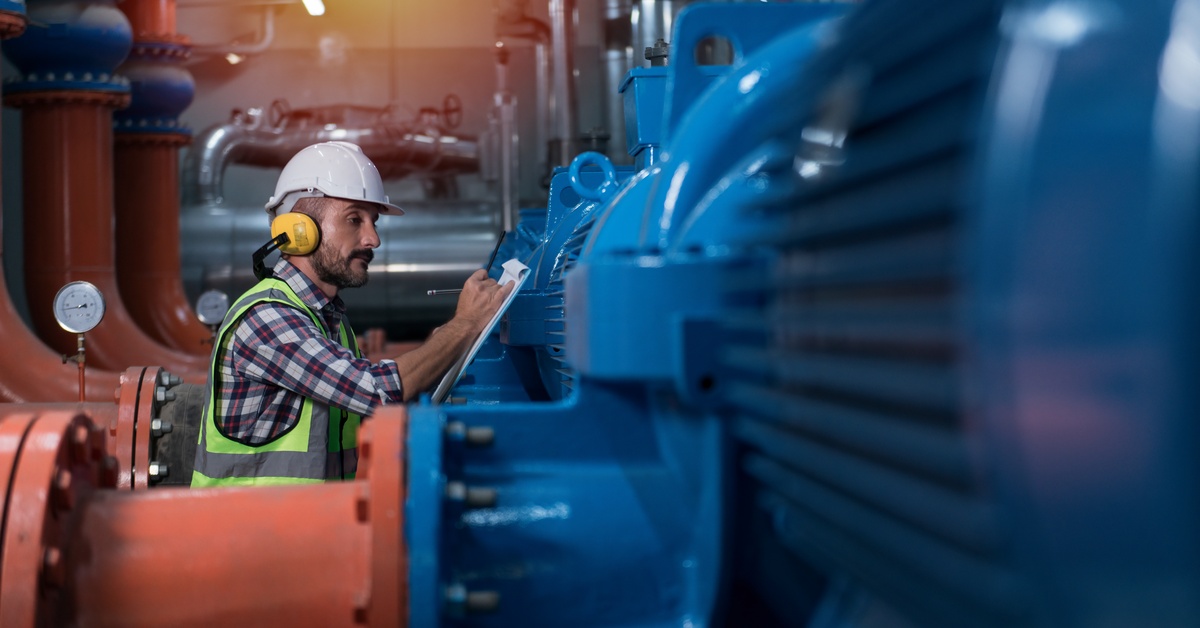
Portable washdown pumps ensure cleanliness, sanitation, and efficiency in refilling and cleaning portable toilets. Portable toilet trucks use these pumps to clean and sanitize portable toilets, remove waste residue, and ensure compliance with health and safety standards. However, when a washdown pump begins to fail, it can disrupt operations and increase costs if the business does not promptly address it.
Understanding how to identify, troubleshoot, and prevent pump issues is essential for maintaining smooth workflows. This guide from Varco Supply will walk you through eight practical tips for identifying and addressing a failing washdown pump.
Washdown pumps handle the demands of environments in which regular cleaning and sanitation are necessary, such as portable toilet service. Common in the portable sanitation industry, these pumps combat dirt, debris, and contamination by delivering high-pressure water efficiently. While they aren’t designed for municipal water plants or large-scale industrial sanitation, they efficiently provide water for smaller-scale sanitation needs. Their robust design and reliability make them suitable for frequent use, but like any equipment, they are not immune to failures.
A failing washdown pump can emerge due to several factors ranging from improper operation to neglected maintenance. Troubleshooting the issue promptly can save significant downtime and additional costs.
The first step in troubleshooting a failing washdown pump is to identify the specific issue affecting it. Symptoms include a lack of water pressure, inconsistent performance, unusual noises, or physical damage.
Begin by observing how the pump behaves, then assess both the internal components and external connections to find the root cause. Once you’ve noticed the issue or narrowed down to a particular area, you can begin targeted repairs and maintenance.

Several recurring issues contribute to pump failures. Recognizing these problems is key to effective troubleshooting. These are some of the most common reasons for failure.
Improper use is a leading cause of pump failure. Washdown pumps are designed to function within specific power ratings and pressure limits. Overloading the pump or operating it at restricted pressures can strain the system and result in premature wear or internal damage.
Only use the pump according to the manufacturer's guidelines. Confirm the correct settings for water flow, pressure, and power output. Operating the pump within its intended design scope can prevent unnecessary strain.
Filters play a crucial role in preventing debris from entering the pump’s system. Over time, these filters can become clogged with sediment, restricting the flow of water and affecting the pump’s efficiency.
Check the filters regularly and clean or replace them as needed. Neglecting clogged filters will result in diminished performance and could eventually damage internal components.
Pump ports can also become blocked with debris, cutting off water circulation. A plugged port can impair overall functionality and lead to overheating or motor strain. Inspect all ports for clogs or obstructions and clean them thoroughly during routine maintenance. Regular cleaning and inspections prevent blockages in ports and ensure efficient operation.
Hoses connected to the washdown pump are key to transferring water efficiently. However, hoses can kink, clog, or develop blockages that impede the flow.
Examine the hoses while troubleshooting and check them for buildup, cracks, or improper installation. Replacing damaged hoses often resolves pressure and flow issues.
One of the most avoidable causes of washdown pump failure is lack of regular maintenance. Pumps require consistent care to keep components clean and in working condition.
Maintenance activities such as lubrication, cleaning filters, and inspecting parts ensure the longevity of the system. Ignoring these practices heightens the risk of sudden breakdowns.
When troubleshooting, start with an external inspection. Look for visible signs of wear or damage such as cracks, leaks, or rust.
Address any broken components or loose fittings immediately to prevent further complications. Tighten connections, replace damaged parts, and ensure the pump casing is intact.
The motor is the heart of the washdown pump. Pay attention to how the motor performs during operation. If it struggles to start, overheats, or emits unusual noise or vibrations, it could indicate electrical issues or internal damage. Test the motor, and have a professional examine or replace it to restore optimal functionality.
Inspect all ports and hoses carefully to ensure there are no blockages or obstructions, allowing water to flow freely through the system. Take the time to flush out any buildup, such as dirt, debris, or mineral deposits, and clear any clogs that could restrict movement or compromise the efficiency of the system.
Pay close attention to the hose connections, ensuring they are secure and free of leaks, as loose or damaged connections can lead to inefficiencies or further issues. Choosing the right hoses for your portable washdown pump will also enhance performance. Regular maintenance like this will help keep the system functioning optimally and prevent potential problems down the line.

While routine maintenance can often address minor issues, scheduling regular professional inspections is essential for uncovering hidden or more complex problems that might go unnoticed during everyday checks. Professionals bring specialized tools and expertise to perform thorough diagnostics, ensuring that all systems are functioning optimally. They can test operational efficiency, identify wear and tear, and assess components that may be at risk of failure.
By catching these issues early, you can avoid unexpected breakdowns, reduce downtime, and extend your portable sanitation equipment’s lifespan. This proactive approach helps maintain productivity and saves your business significant time and money in the long run.
Solving the problem is only part of the process. Taking preventive measures ensures that the same issue doesn’t happen again. Implement these steps to prolong the life of your washdown pump.
Due to their portable nature, being on the road can leave washdown pumps vulnerable to many conditions. Protect your pump from weather conditions, dust, and roadside debris by placing it in a protective case or enclosing it on your truck bed.
When pumps or their components are beyond repair, it’s important to replace them with high-quality products. Varco Supply offers durable, efficient water pumpers designed to withstand the wear and tear your truck endures. Upgrading to reliable equipment minimizes the chance of recurring failures and downtime.
Maintaining a service record for your washdown pump helps track its performance and condition over time. Documenting inspections, repairs, and replacements allows you to identify patterns and implement preventative measures effectively.
Washdown pumps are integral to the smooth operation of portable toilet trucks and the portable sanitation industry. Issues like clogged filters, blocked hoses, or a malfunctioning motor can halt productivity. By following the troubleshooting steps outlined above, you can restore your failed washdown pump’s performance and extend its operational lifespan.
To ensure continued efficiency, prioritize routine maintenance, monitor for warning signs, and invest in high-quality replacements when necessary. For premium water pump equipment, browse the Varco Supply catalog and discover durable solutions tailored to your sanitation needs.